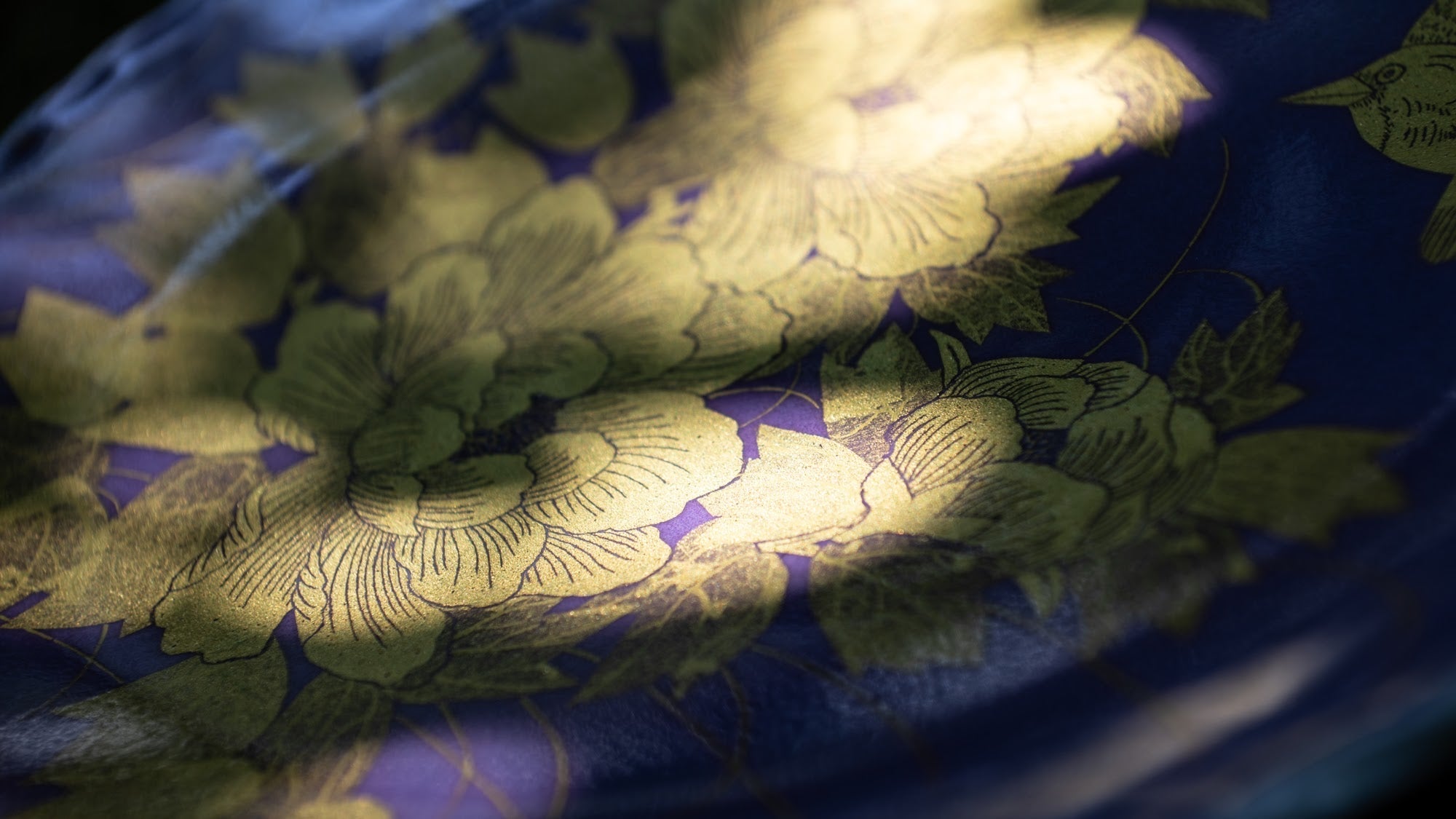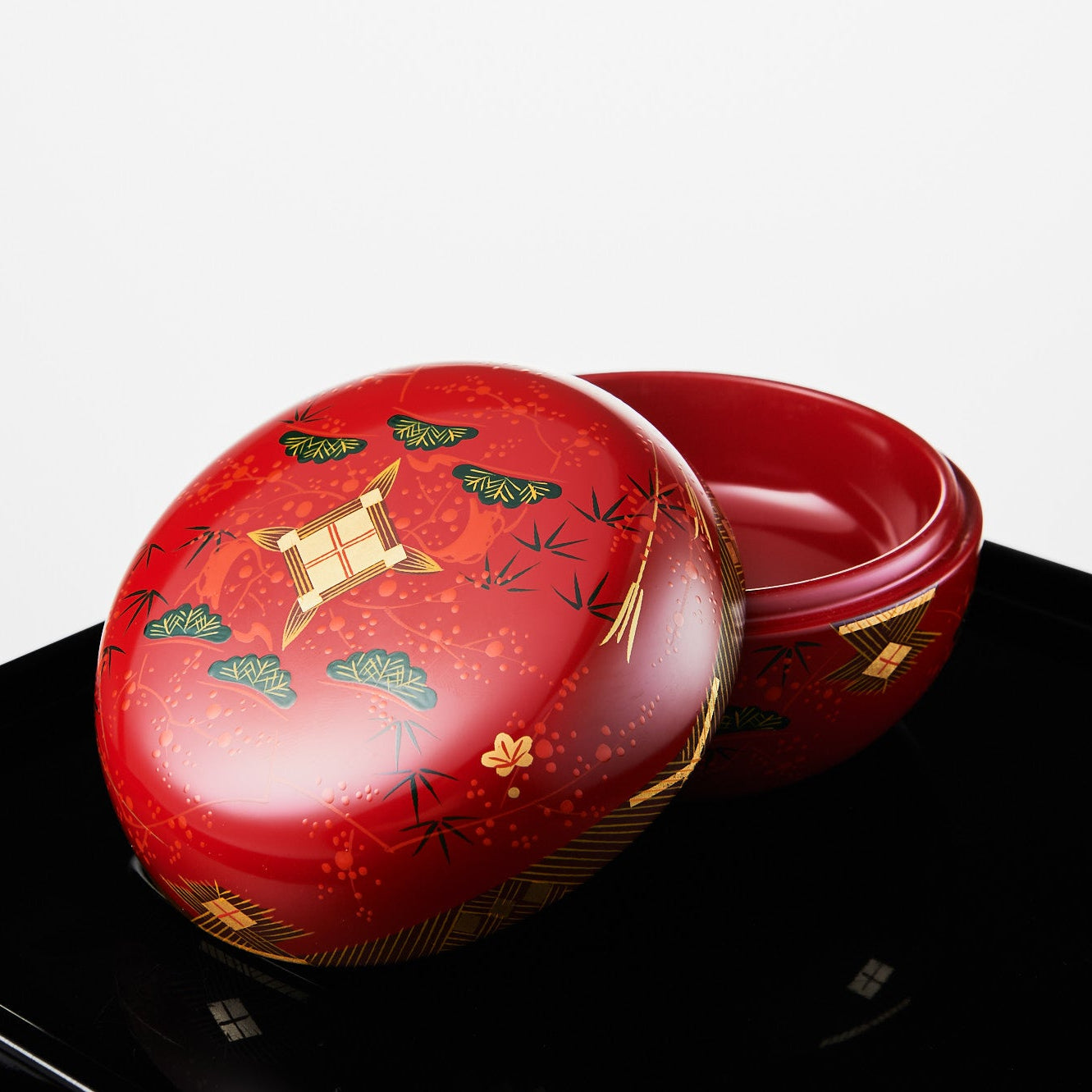
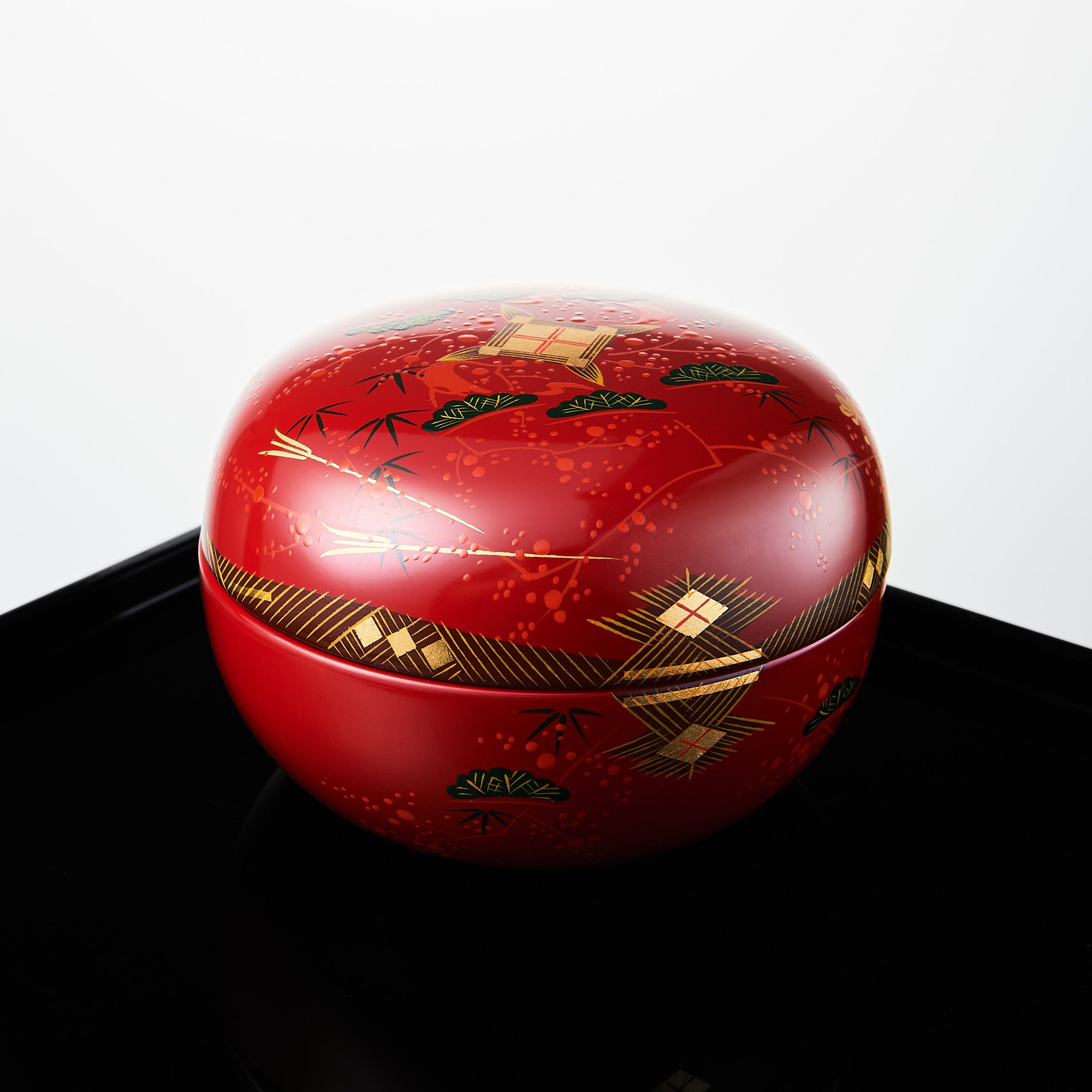

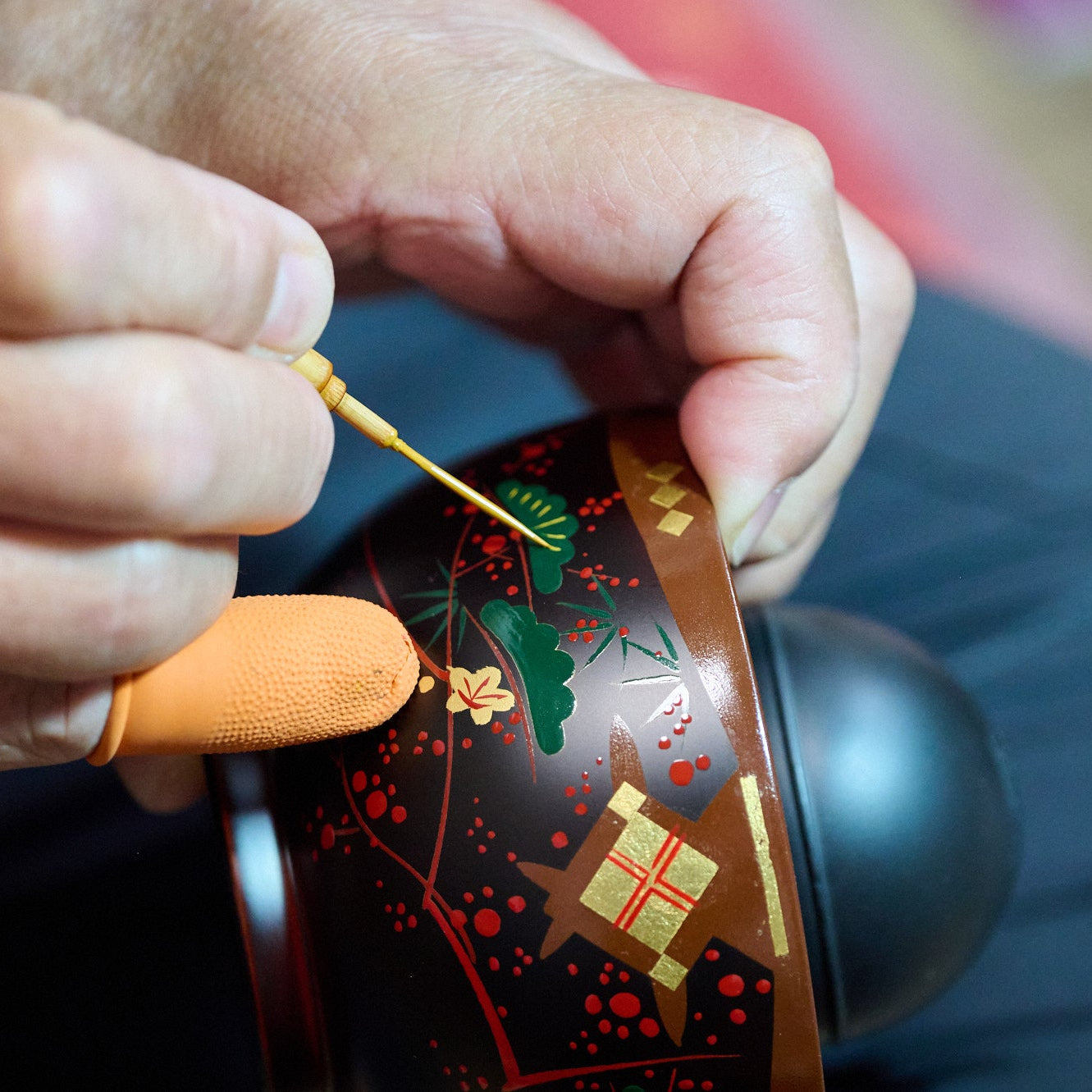


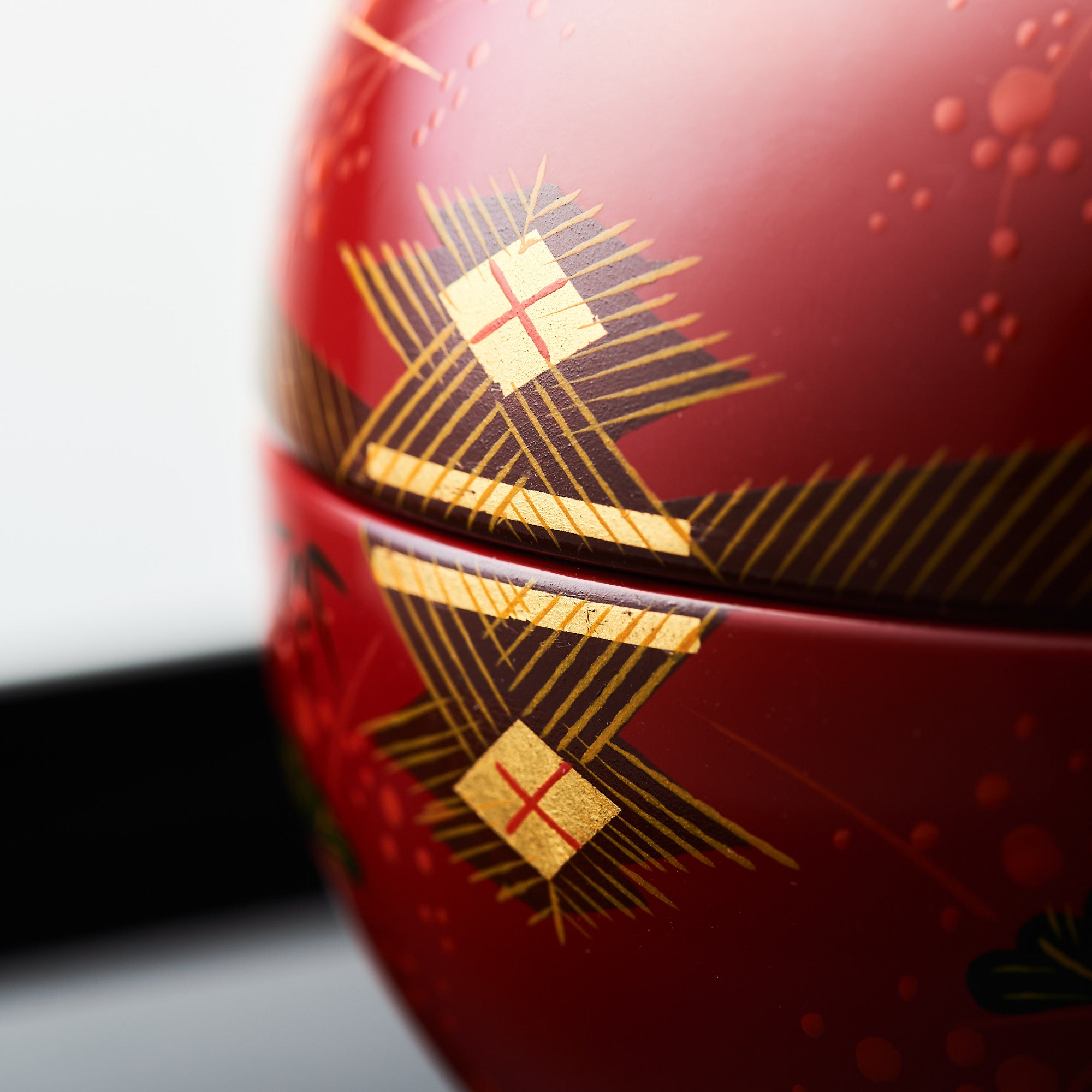
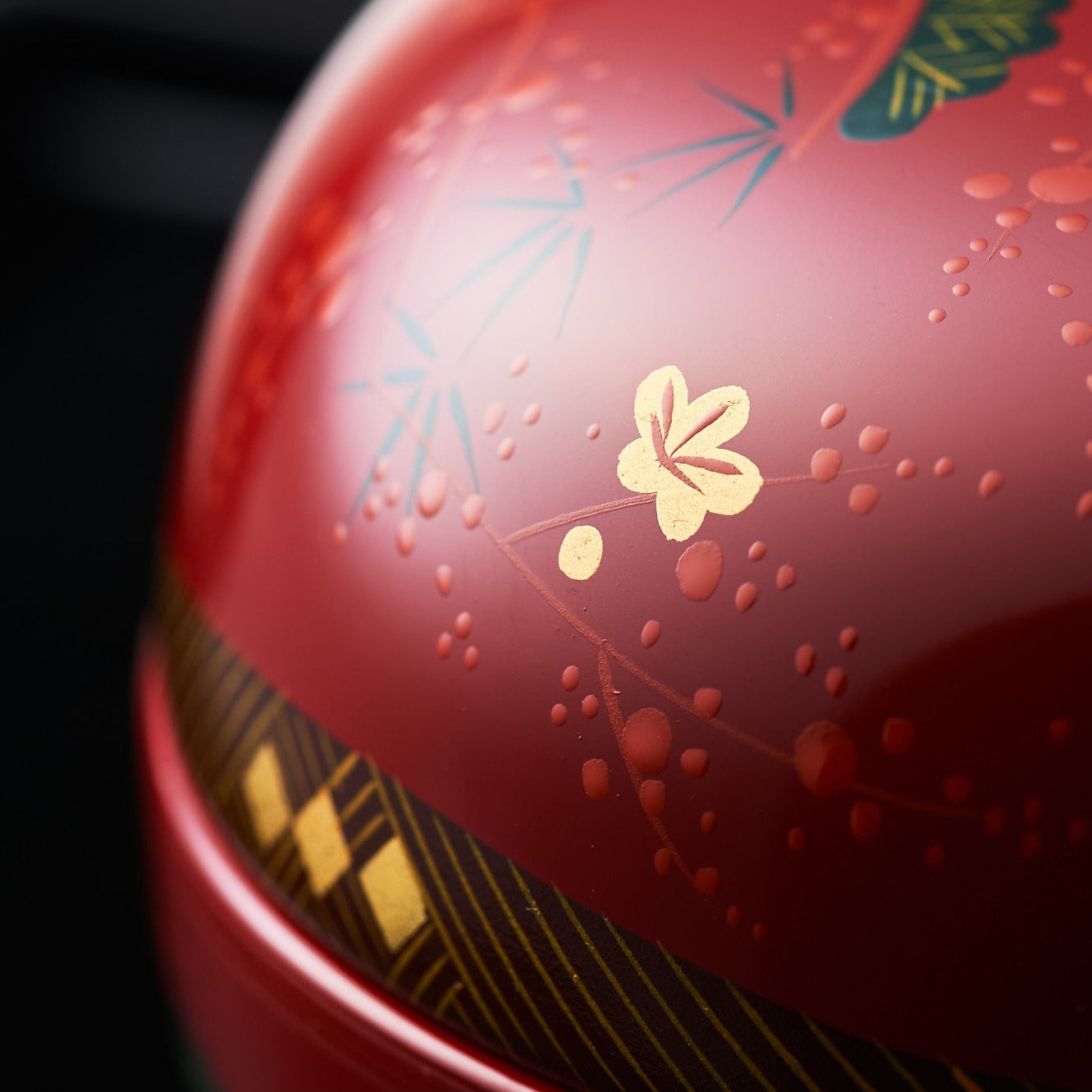
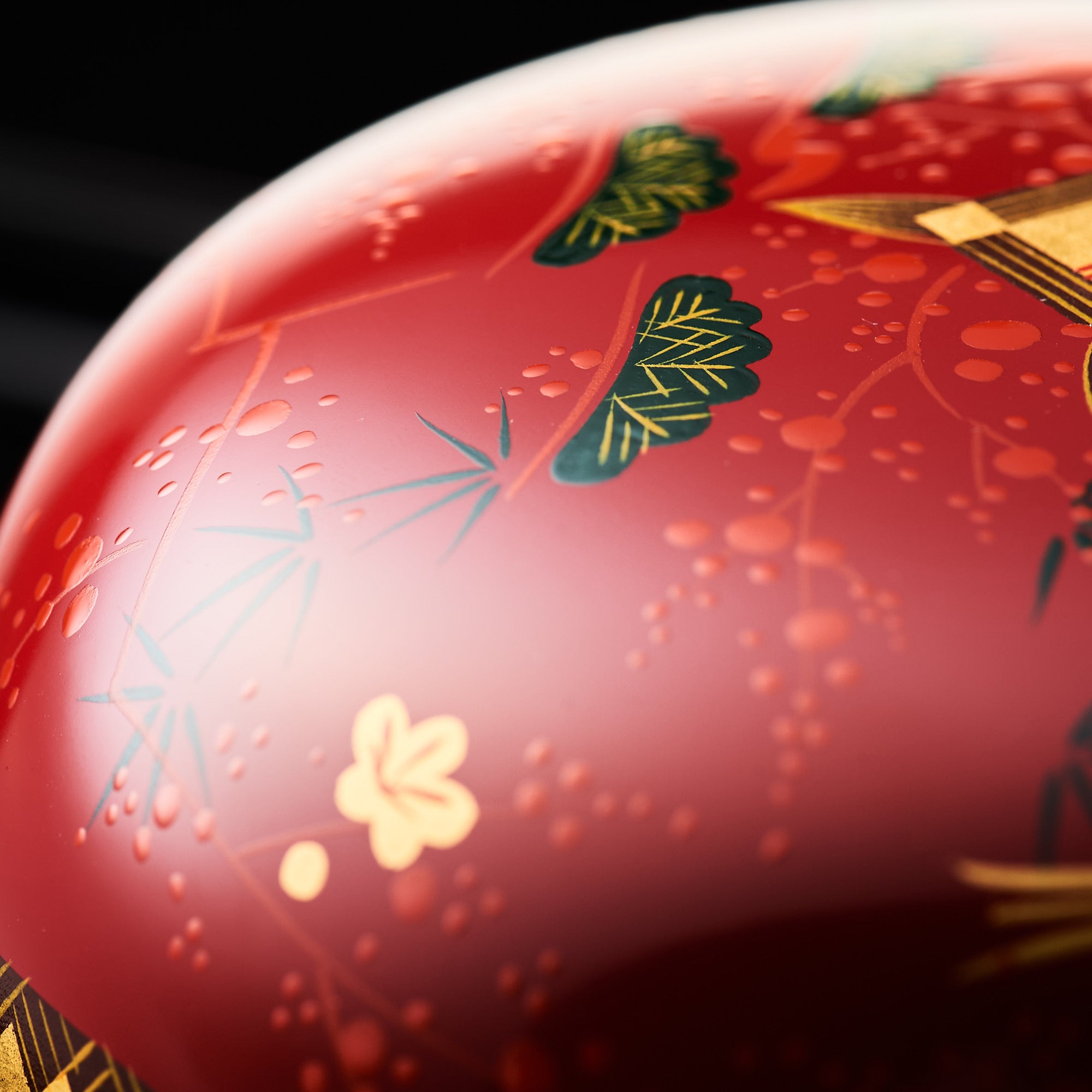

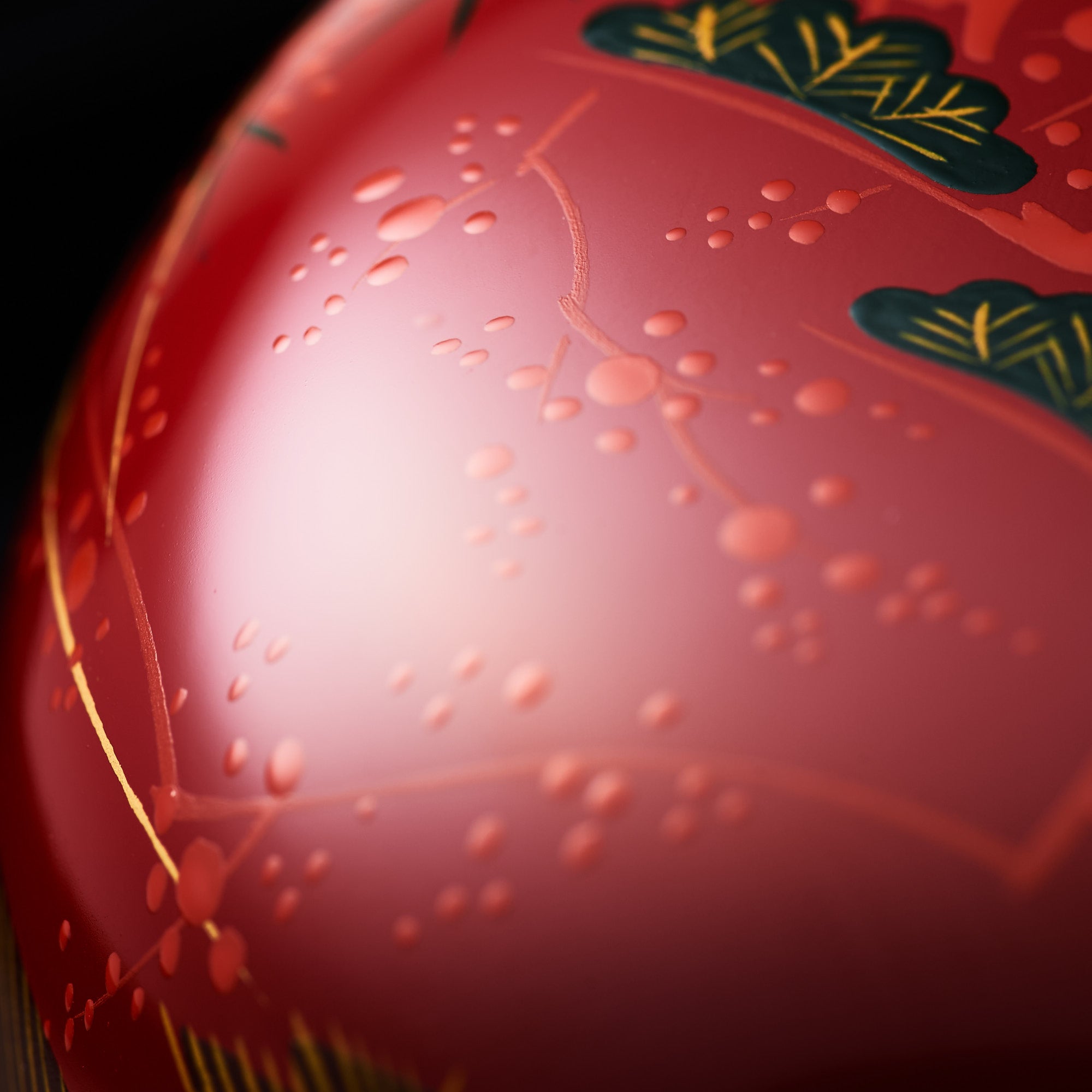
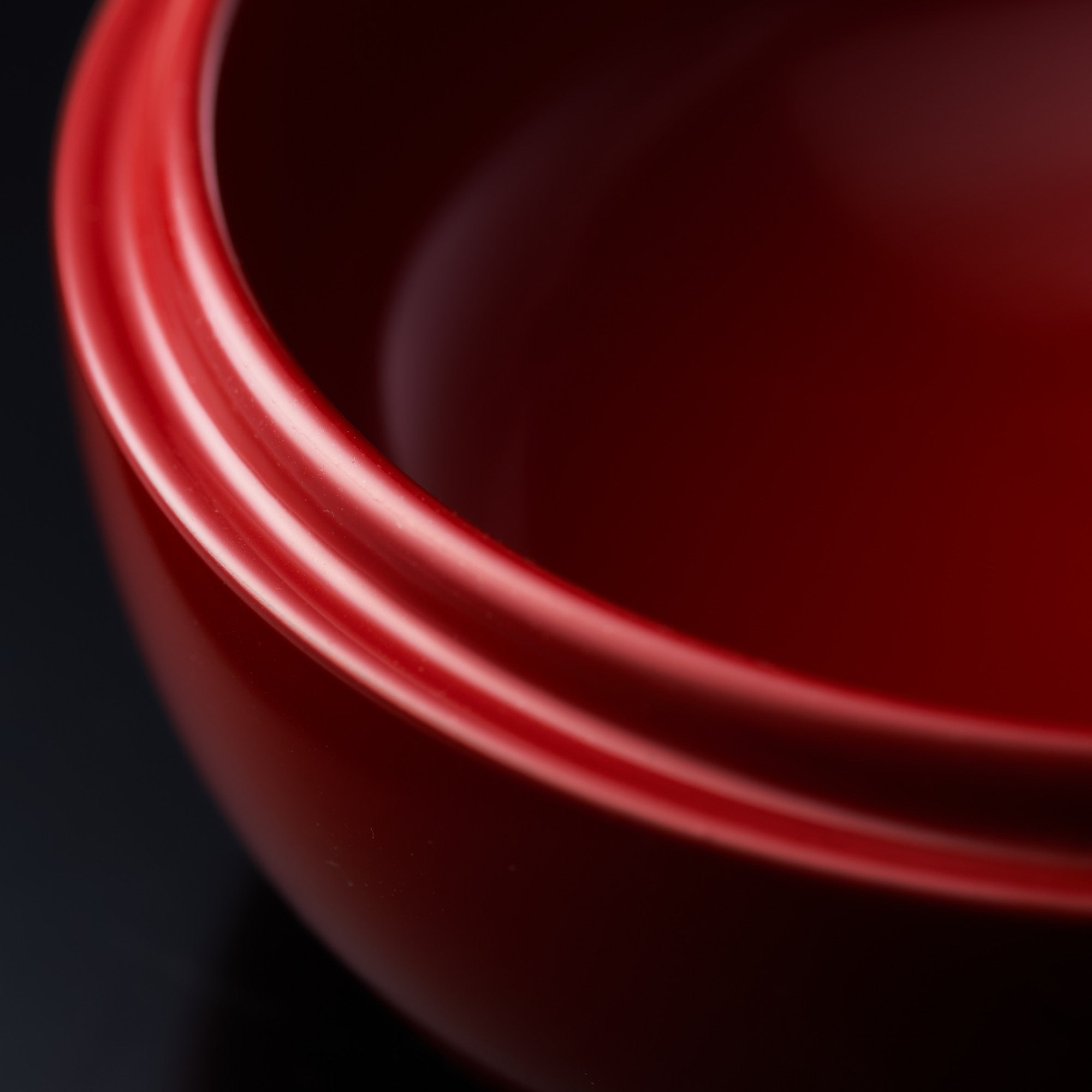
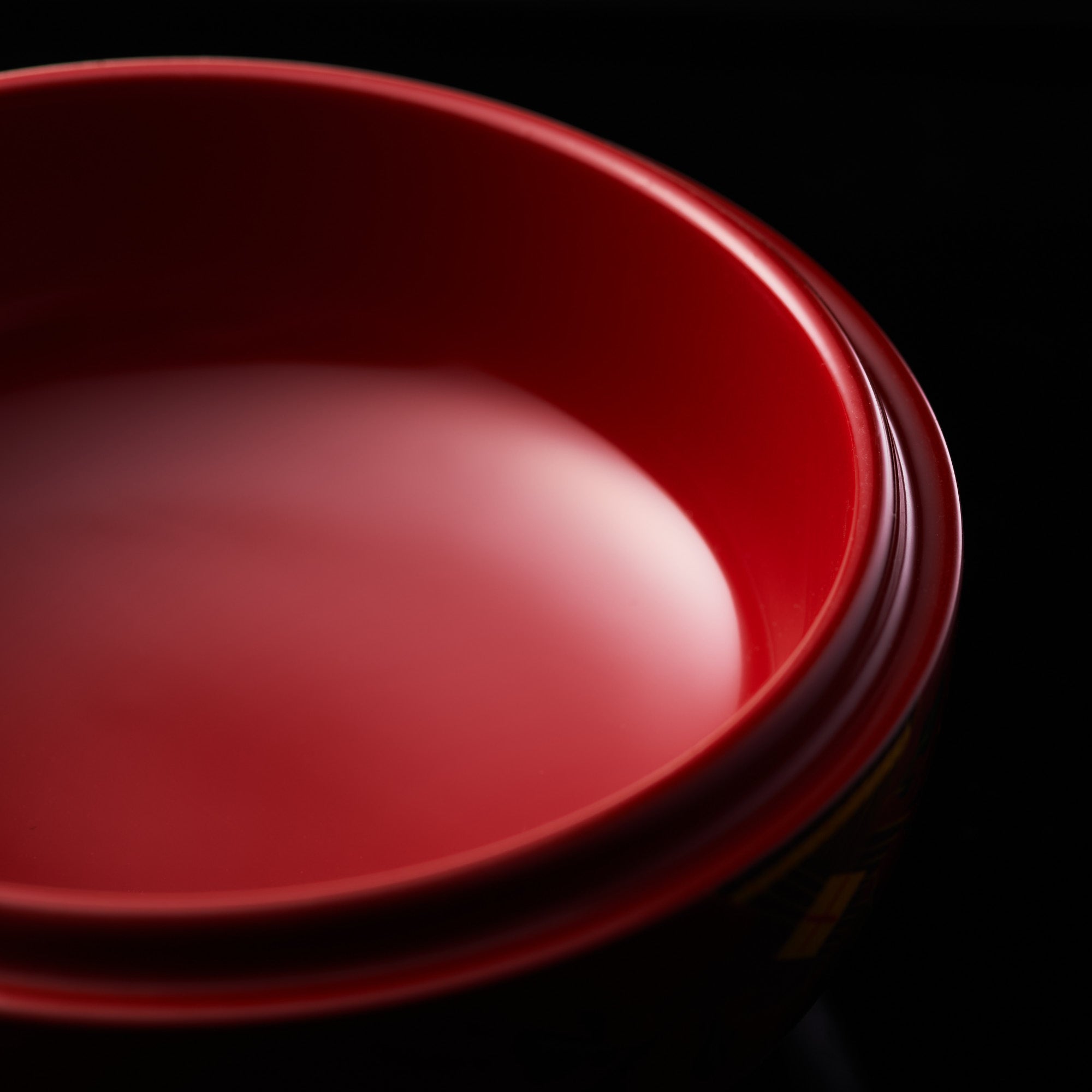
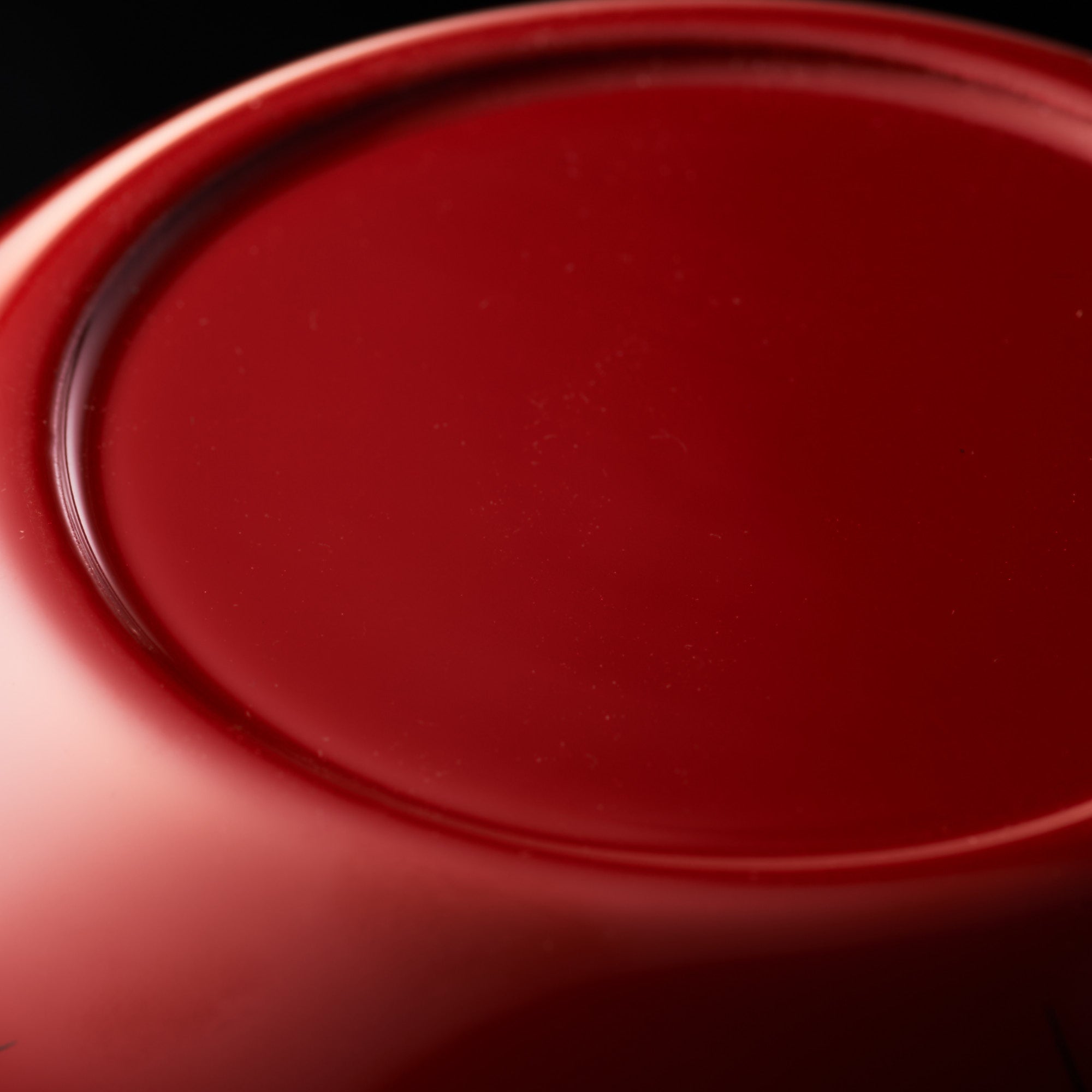

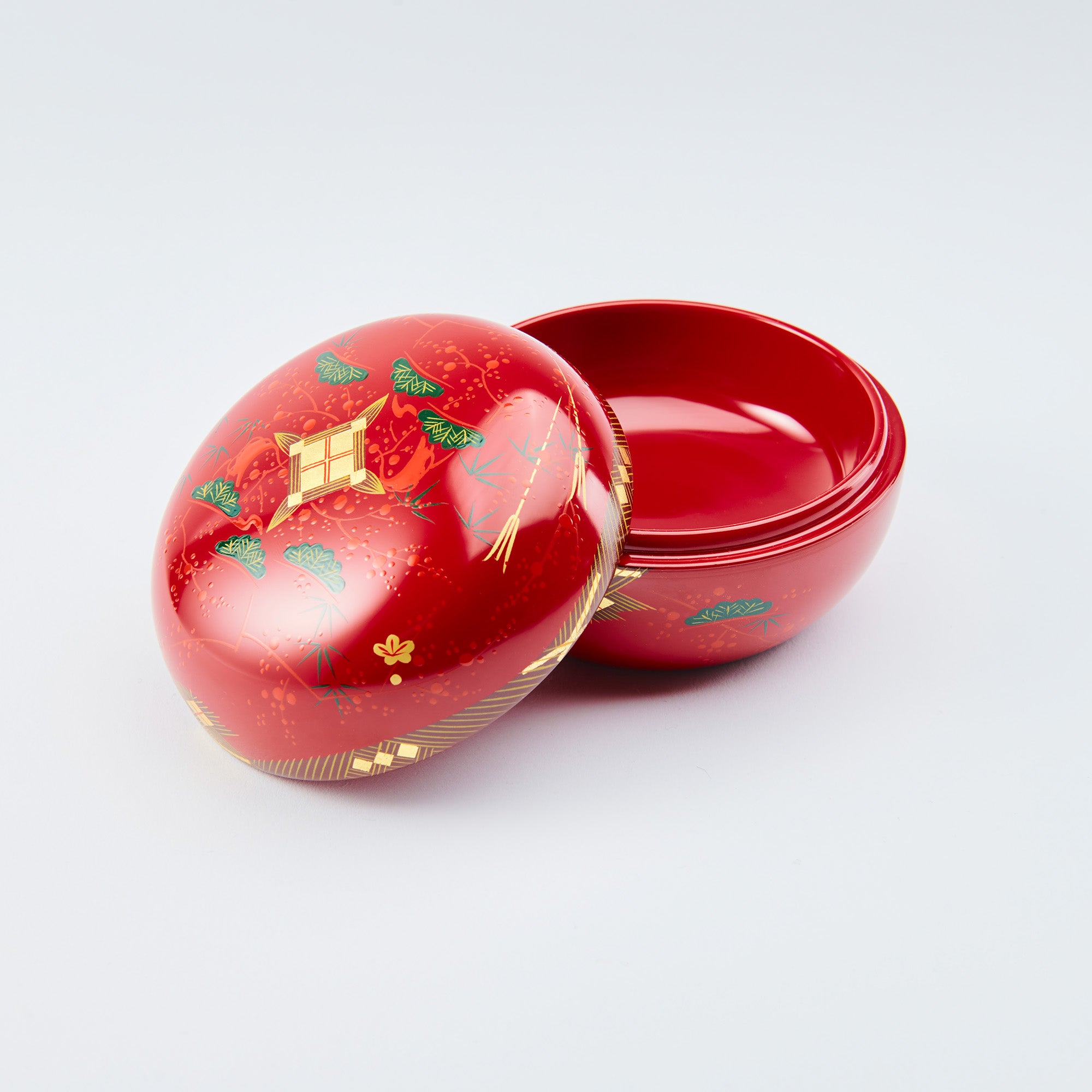
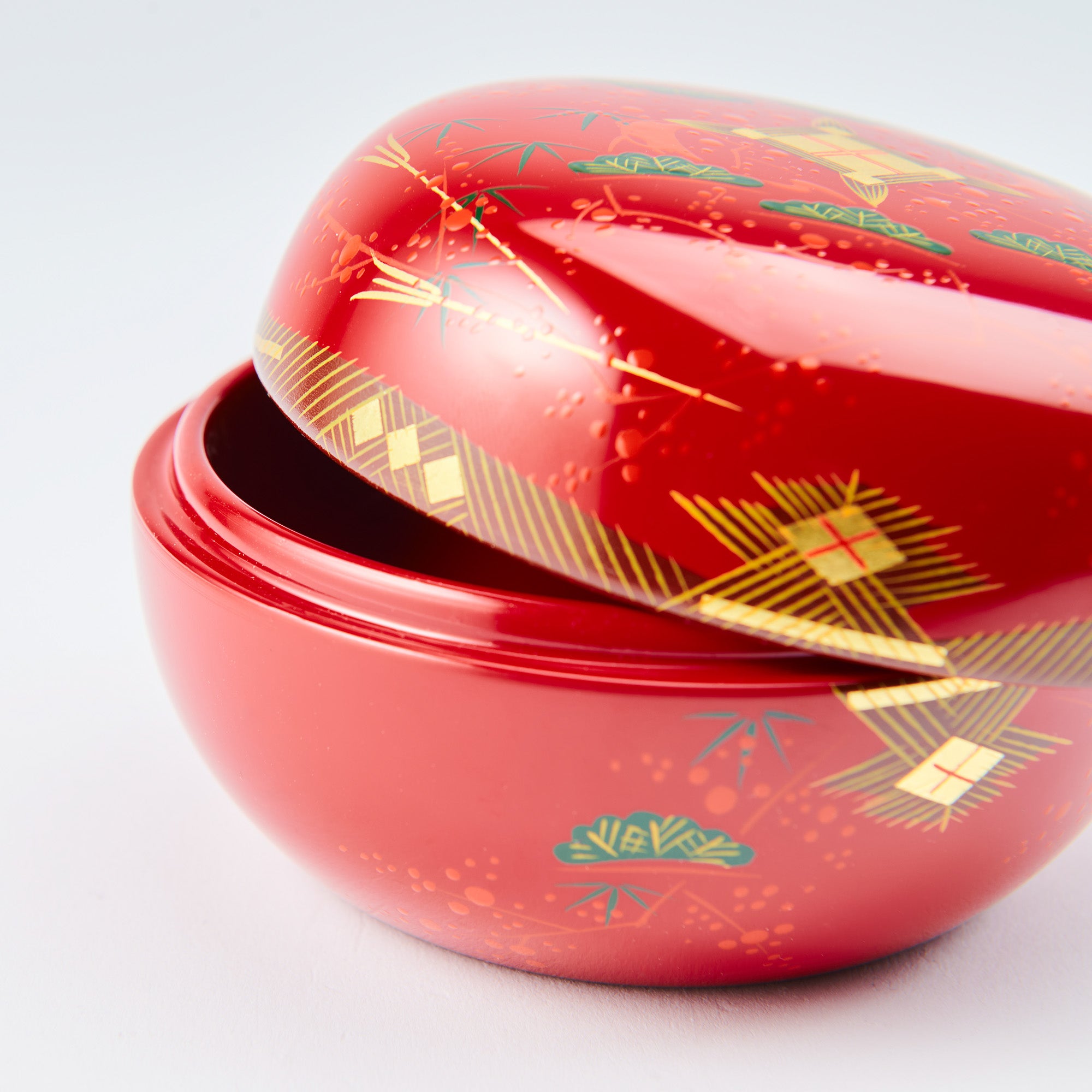



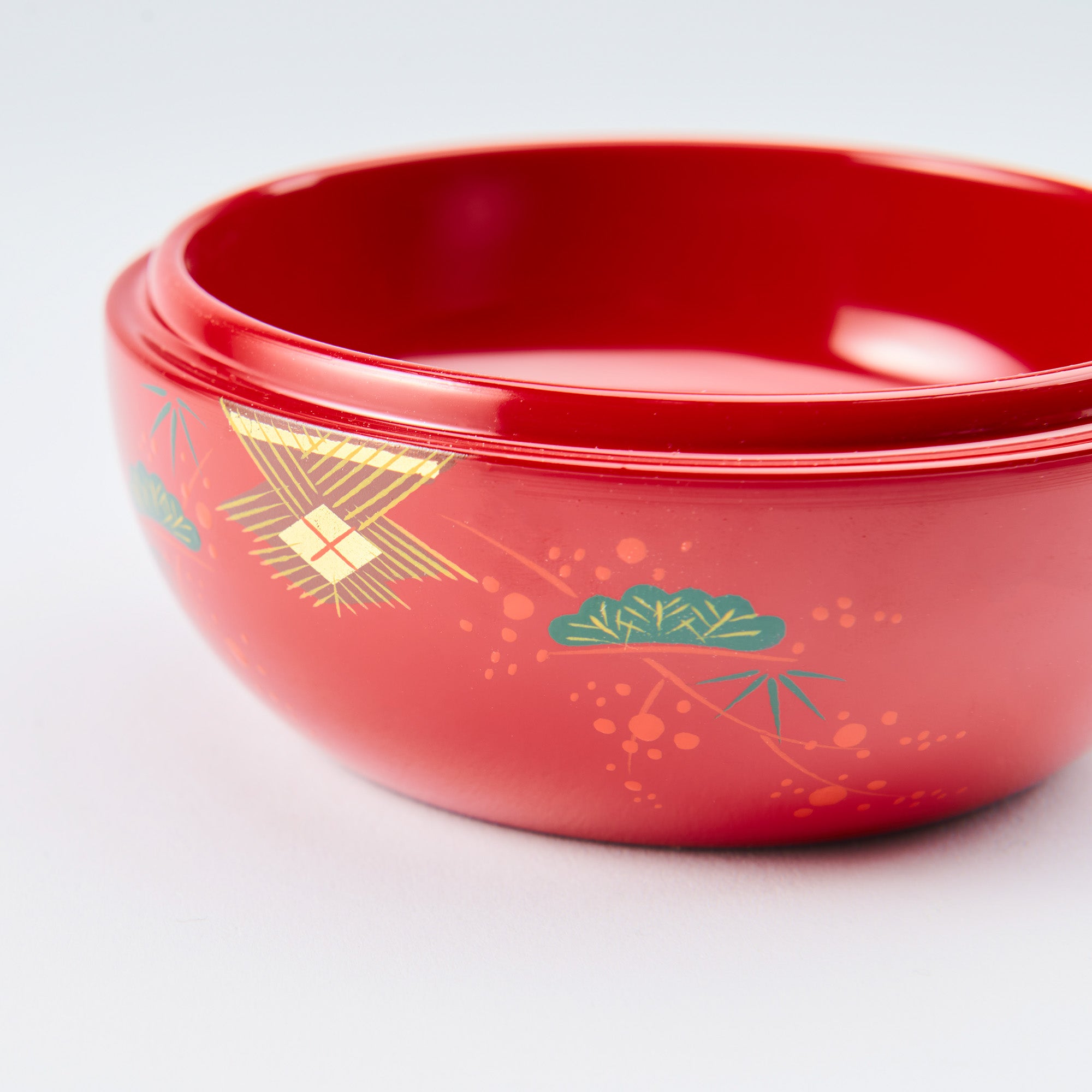
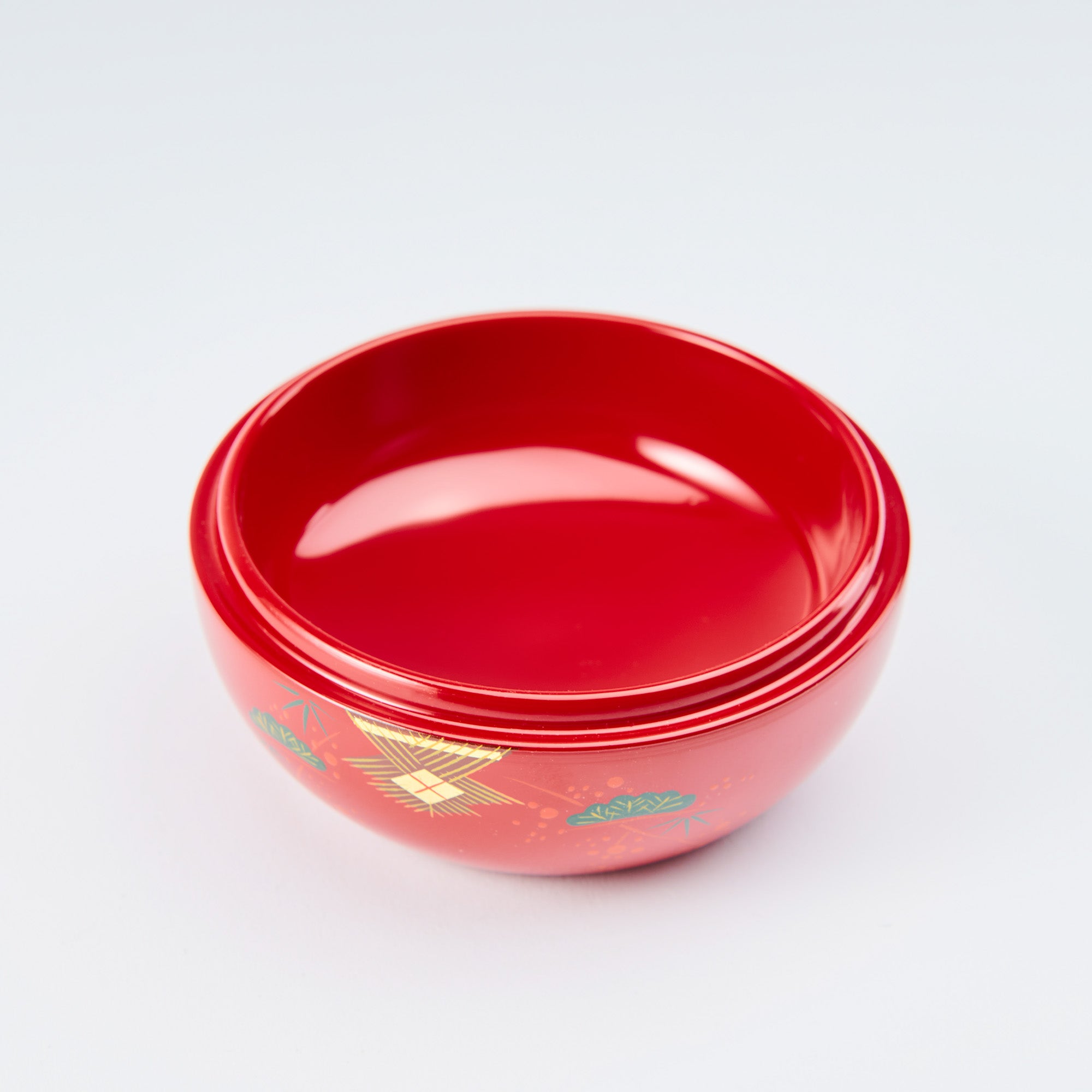


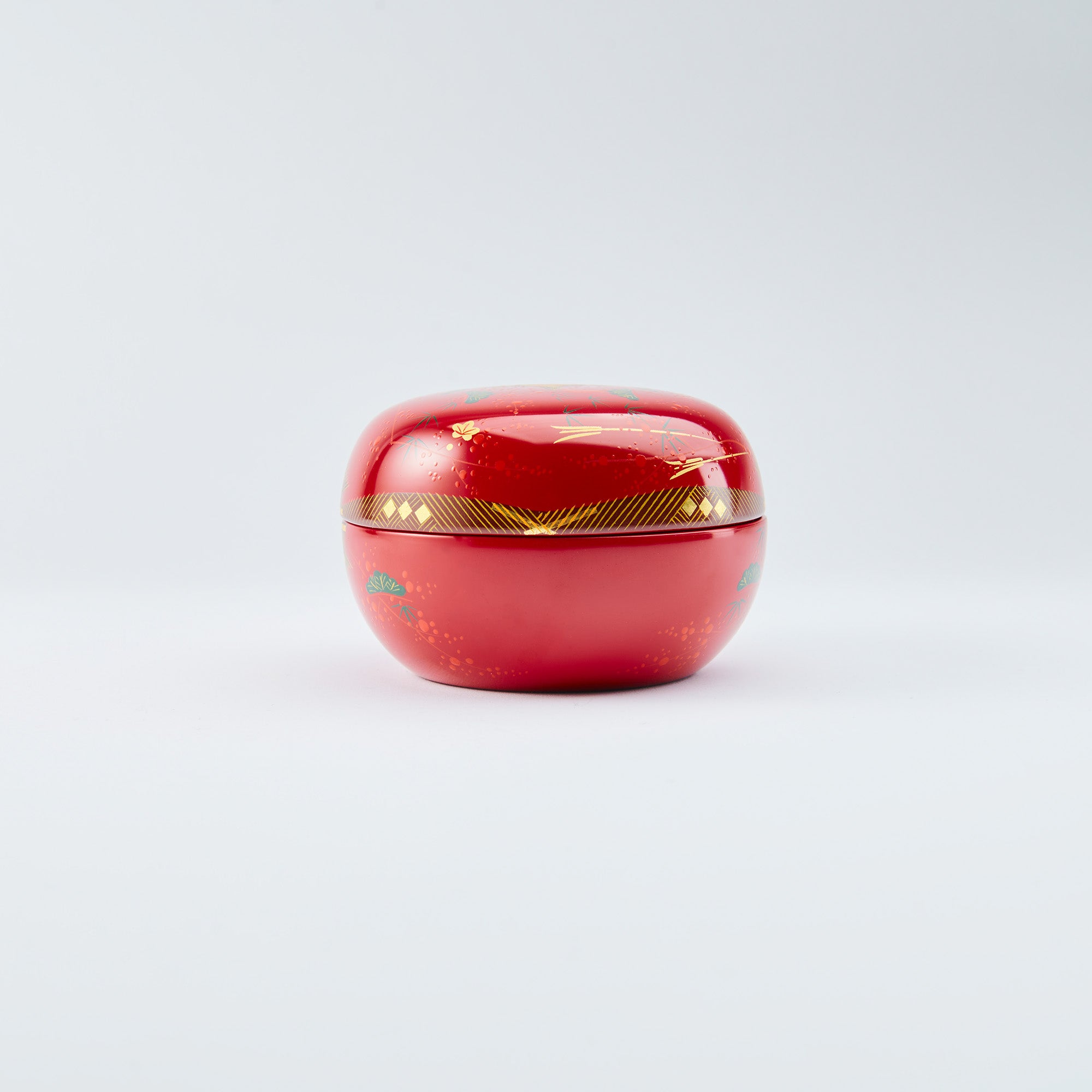
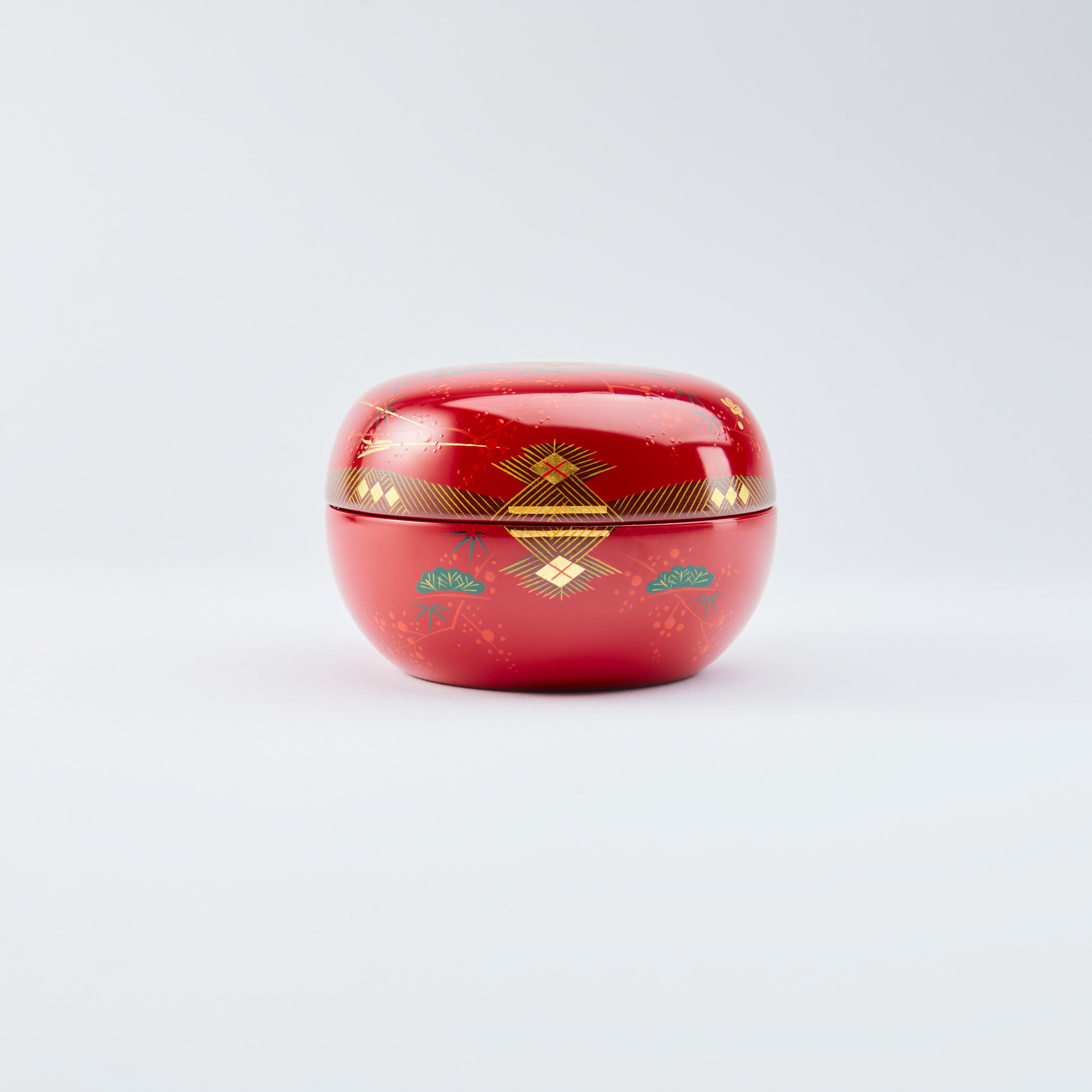
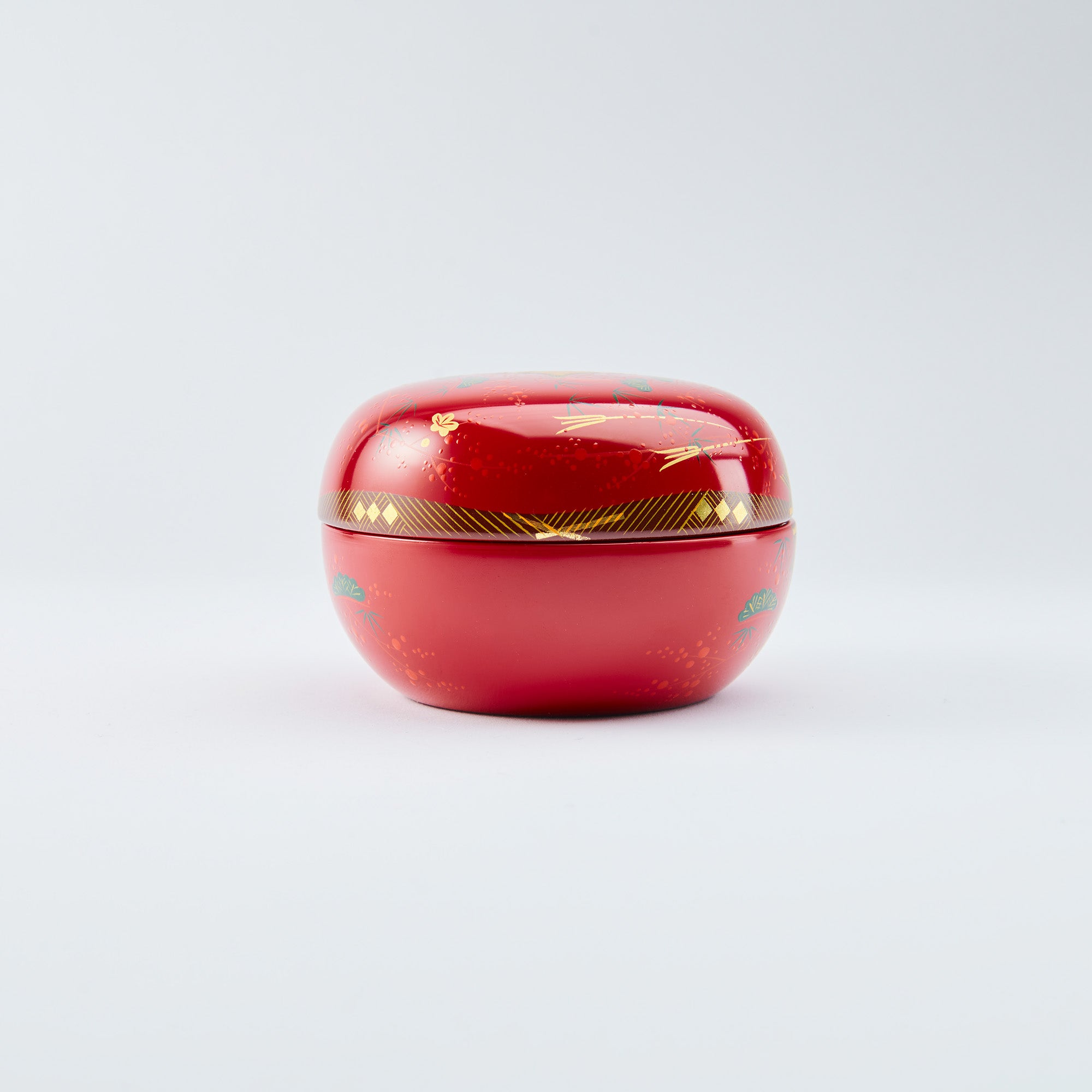
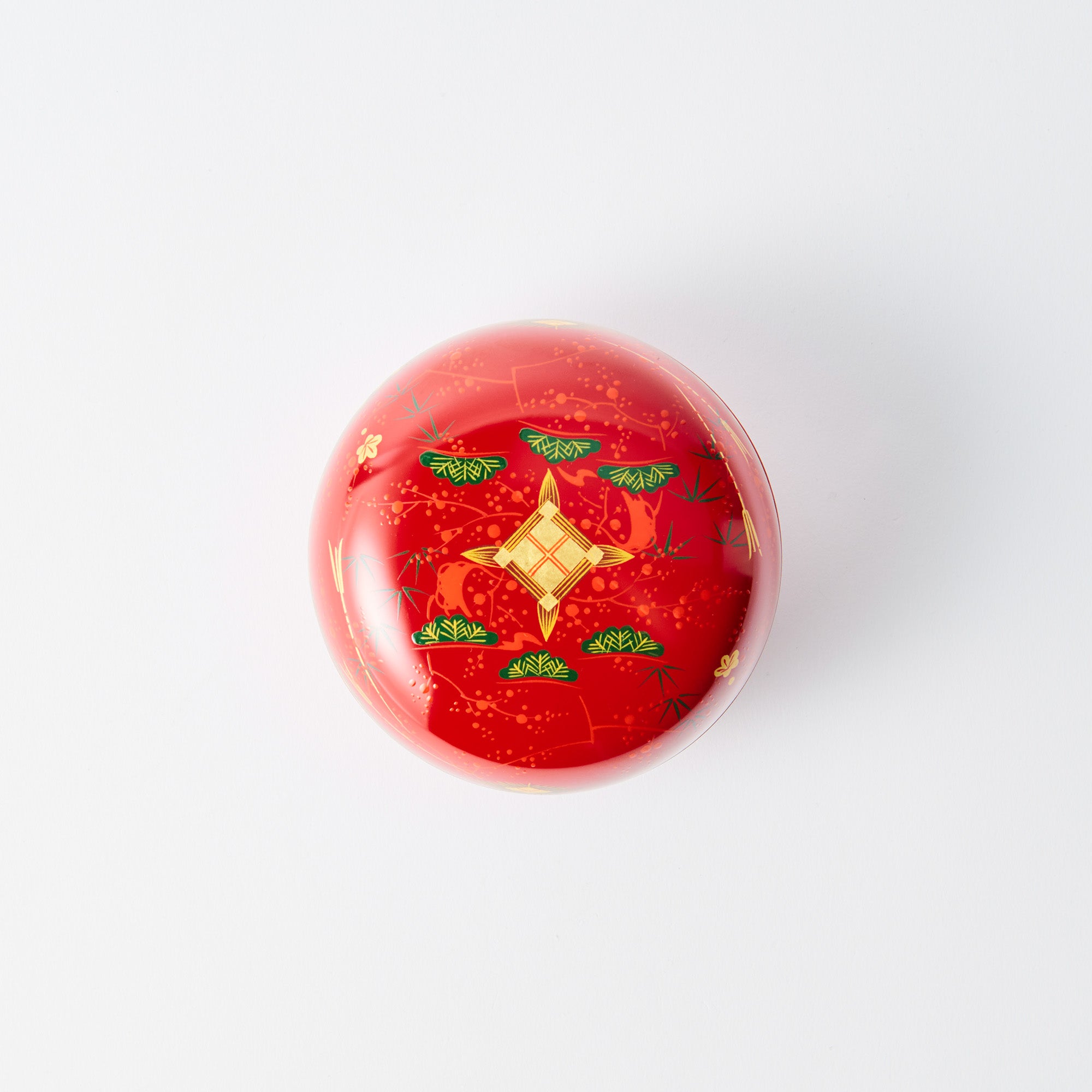

Pine, Bamboo and Plum Candy Box
The Aizu Lacquer Candy Box by Komatsu Shigeo exemplifies the quiet refinement and auspicious symbolism of traditional Japanese artistry. Its softly rounded form is adorned with motifs of pine, bamboo, plum blossoms, hamaya (evil-dispelling arrows), and higaki latticework, each an emblem of good fortune and enduring grace. The pine represents steadfastness and integrity, the bamboo resilience and peace through the seasons, while the plum blossom, which blooms in the cold of winter, symbolizes dignity and perseverance. The hamaya motif, often associated with blessings and protection, makes this piece particularly suited for celebratory occasions.
Crafted using the traditional Aizu-e technique of lacquer painting, the design is first transferred onto the surface through a kataoshi pressing process, then outlined in bengara urushi, a mixture of iron oxide and natural lacquer. Komatsu carefully paints rounded pines on the upper and lower sections of the box, places bamboo leaves between them, and completes the composition with delicate clusters of plum blossoms. The piece is finished with keshikin, a matte gold application that subdues the sheen of the metal, creating an understated yet radiant elegance.
Komatsu places great emphasis on what he calls the “flow of composition,” ensuring that each motif harmonizes with the vessel’s natural form. His work carries forward the subtle, richly colored expressions characteristic of Aizu-e lacquer painting. For the plum blossoms, he employs the mori-e technique, a method of raised painting that gives the flowers a gentle three-dimensional presence. Because even the slightest variation in drying affects the result, careful control of temperature and humidity is essential throughout the process.
Every stage of production is performed entirely by hand, and the subtle fluctuations of the brush lend the piece a quiet warmth and human presence.
DETAILS
| Quantity | 1 |
| Size |
D 11.0 cm (4.3 in) x H 7.5 cm (3.0 in) [inner] D 9.3 cm (3.7 in) |
| Weight | 140 g (4.9 oz) |
| Material |
Wood [Coating] Lacquer |
| Package Type | Wooden box |
| Microwave | No |
| Dishwasher | No |
Maker / Brand
Through the timeless medium of gold and lacquer, Komatsu Shigeo transforms stillness into radiance. He continues Japan’s long tradition of urushi art and the intricate maki-e technique. His maki-e works speak not through extravagance but through calm precision. Every curve, every shimmer, feels measured yet alive, like a breath suspended between motion and rest. Komatsu’s artistry lies in his ability to reveal depth through restraint, distilling centuries of Aizu craftsmanship into forms. The result is not mere ornamentation, but a meditation on the enduring dialogue between hand, material, and time.

Crafts
La laque d'Aizu est un artisanat traditionnel originaire de la région d'Aizu, à l'ouest de Fukushima. Nichée dans un bassin entouré de chaînes de montagnes, le climat humide de la région offre des conditions idéales pour le travail de la laque. La laque d'Aizu est réputée pour ses motifs propices et ses techniques décoratives raffinées, notamment Aizu-e, avec des motifs floraux japonais vibrants, et maki-e, qui utilise de la poudre d'or pour créer des motifs complexes.
Fermement enracinée dans plus de 400 ans de tradition, la laque d'Aizu continue d'évoluer en adoptant des techniques modernes, partageant sa beauté intemporelle avec le monde d'aujourd'hui.

Choisir les options
About Artist
Galerie Musubi
Depuis sa création, Musubi Kiln s'est efforcé de faire découvrir au monde les meilleurs métiers traditionnels des maîtres de tout le Japon.
Ici, dans la galerie, nous mettons en valeur le plus haut niveau de techniques traditionnelles transmises de génération en génération. Vous pourrez y découvrir les œuvres de maîtres qui ont non seulement perfectionné ces méthodes, mais y ont également ajouté leur imagination pour innover encore davantage.
Certains de ces maîtres ont même été nommés Trésors nationaux vivants, un titre qui leur a été décerné par le gouvernement japonais pour reconnaître officiellement leur contribution à l'artisanat et à la culture, consolidant ainsi leur héritage et en faisant d'eux une partie importante de l'histoire de l'art.
Chaque pièce est minutieusement fabriquée à la main pendant de nombreux mois pour créer un trésor intemporel et unique. Et une fois chez vous, vous ferez partie de son histoire.
Bienvenue dans la galerie. Parcourez-la à votre guise.
